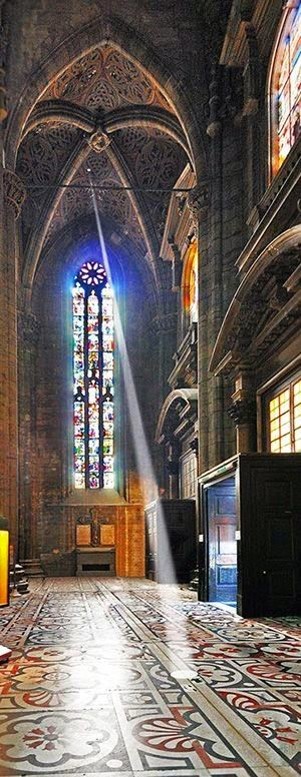
In Italy, until the second half of the 18th century, the beginning of the new day, which was divided in 24 hours, was related to the setting of the Sun. Due to the orbit of the Earth around the Sun, the length of the day from sunset to sunset changes a few to several minutes each day during the year: a total of about 3.5 h at the latitude of Milano. For this reason many european countries decided to move the official start of the new day to the “Solar noon”, namely the time at which the Sun appears to cross the local celestial meridian and reaches its highest point in the sky. The solar noon can be determined with a Meridian.
An Austrian imperial decree stated that, starting on December 1, 1786, the Austrian empire was going to adopt the “transalpine time”, or “French time”, that started the new day with the Solar noon. Since Austria was ruling Lombardy at the time, the astronomers of the Brera Astronomical Observatory were given the job of building a meridian line inside the Duomo of Milan.
The meridian line is still visible on the floor of the Duomo, crossing the width of the church very close to the main entrance: it is a brass band inlaid in the floor, oriented from South to North. At the Northern end, the line continues on the wall for about 3 meters (9.84 ft), because the floor was not long enough. A hole in the roof near the south wall, at 24 meters (78.7ft) in height, allows the sunlight to come in and illuminate the brass line.
This location was dictated by two constraints given to the astronomers: the meridian line had to be easily accessible to every person who came into the cathedral and, at the same time, it could not interfere with the religious services. The location of the Meridian was also convenient for the astronomers, because they could check the correct positioning of the inlays with the solar noon measured at the Observatory, that was visible from a temporary platform built above the vault of the cathedral.
However it was clearly impractical to think that citizens needed to go to the Duomo at noon to set their clocks. Therefore the city created a public service to better distribute the information: at the solar noon, a visual signal was sent to the Castello Sforzesco (about 1 km away) from which a cannon shot was fired to signal the start of the new day.
